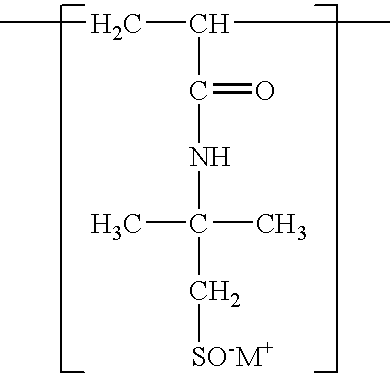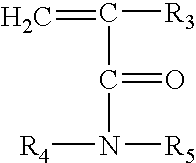Cement compositions with improved fluid loss characteristics and methods of cementing in surface and subterranean applications
- Summary
- Abstract
- Description
- Claims
- Application Information
AI Technical Summary
Benefits of technology
Problems solved by technology
Method used
Image
Examples
example 2
Sample Composition No. 4 was then permitted to age for a period of two days, and a period of ten days. After each time period had elapsed, a fluid loss test was again performed for 30 minutes at 1,000 psi and 125° F. After aging for a total of two days, Sample Composition No. 4 demonstrated a fluid loss of 84 cubic centimeters. After aging for a total of ten days, Sample Composition No. 4 demonstrated a fluid loss of 76 cubic centimeters. This Example demonstrates, inter alia, that the use of a fluid loss control additive comprising a reduced dose of an acrylic acid copolymer derivative, can deliver performance equal to or superior to a larger dose of an acrylic acid copolymer derivative.
example 3
Sample compositions were prepared by mixing a cement slurry with a fluid loss control additive according to the following procedure. Each sample was dry blended, then mixed for 35 seconds at 13,000 rpm in a blender. Next, the sample was conditioned for 20 minutes at 125° F. in an atmospheric consistometer. After the sample was poured into a preheated cell with a 325 mesh screen, a fluid loss test was performed for 30 minutes at 1,000 psi and 125° F., in accordance with API RP 10B, Recommended Practices for Testing Well Cements.
Sample Composition No. 6 (comparative) was prepared by mixing 0.5% of HALAD®-413 bwoc with a 15.8 ppg slurry of an experimental cement bearing compositional similarities to a Class H cement. The fluid loss was found to be 615 cubic centimeters.
Sample Composition No. 7 was prepared by mixing a 15.8 ppg slurry of an experimental cement bearing compositional similarities to a Class H cement with 1.0% of a fluid loss control additive comprising a 1:1 mixture ...
example 4
Sample compositions were prepared by mixing a cement slurry with a fluid loss control additive according to the following procedure. Each sample was dry blended, then mixed for 35 seconds at 13,000 rpm in a blender. Next, the sample was conditioned for 20 minutes at 190° F. in an atmospheric consistometer. After the sample was poured into a preheated cell with a 325 mesh screen, a fluid loss test was performed per API Specification 10.7 for 30 minutes at 1,000 psi and 205° F.
Sample Composition No. 12 (comparative) was prepared by mixing 0.49% of HALAD®-344 bwoc with a 15.8 ppg slurry of an experimental cement bearing compositional similarities to a Class H cement. The fluid loss at 1,000 psi and 205° F. was found to be 220 cubic centimeters.
Sample Composition No. 13 was prepared by mixing 0.98% of a fluid loss control additive of the present invention with a 15.8 ppg slurry of an experimental cement bearing compositional similarities to a Class H cement. The fluid loss control ...
PUM
| Property | Measurement | Unit |
|---|---|---|
| Fraction | aaaaa | aaaaa |
| Fraction | aaaaa | aaaaa |
| Fraction | aaaaa | aaaaa |
Abstract
Description
Claims
Application Information
 Login to View More
Login to View More - R&D
- Intellectual Property
- Life Sciences
- Materials
- Tech Scout
- Unparalleled Data Quality
- Higher Quality Content
- 60% Fewer Hallucinations
Browse by: Latest US Patents, China's latest patents, Technical Efficacy Thesaurus, Application Domain, Technology Topic, Popular Technical Reports.
© 2025 PatSnap. All rights reserved.Legal|Privacy policy|Modern Slavery Act Transparency Statement|Sitemap|About US| Contact US: help@patsnap.com



